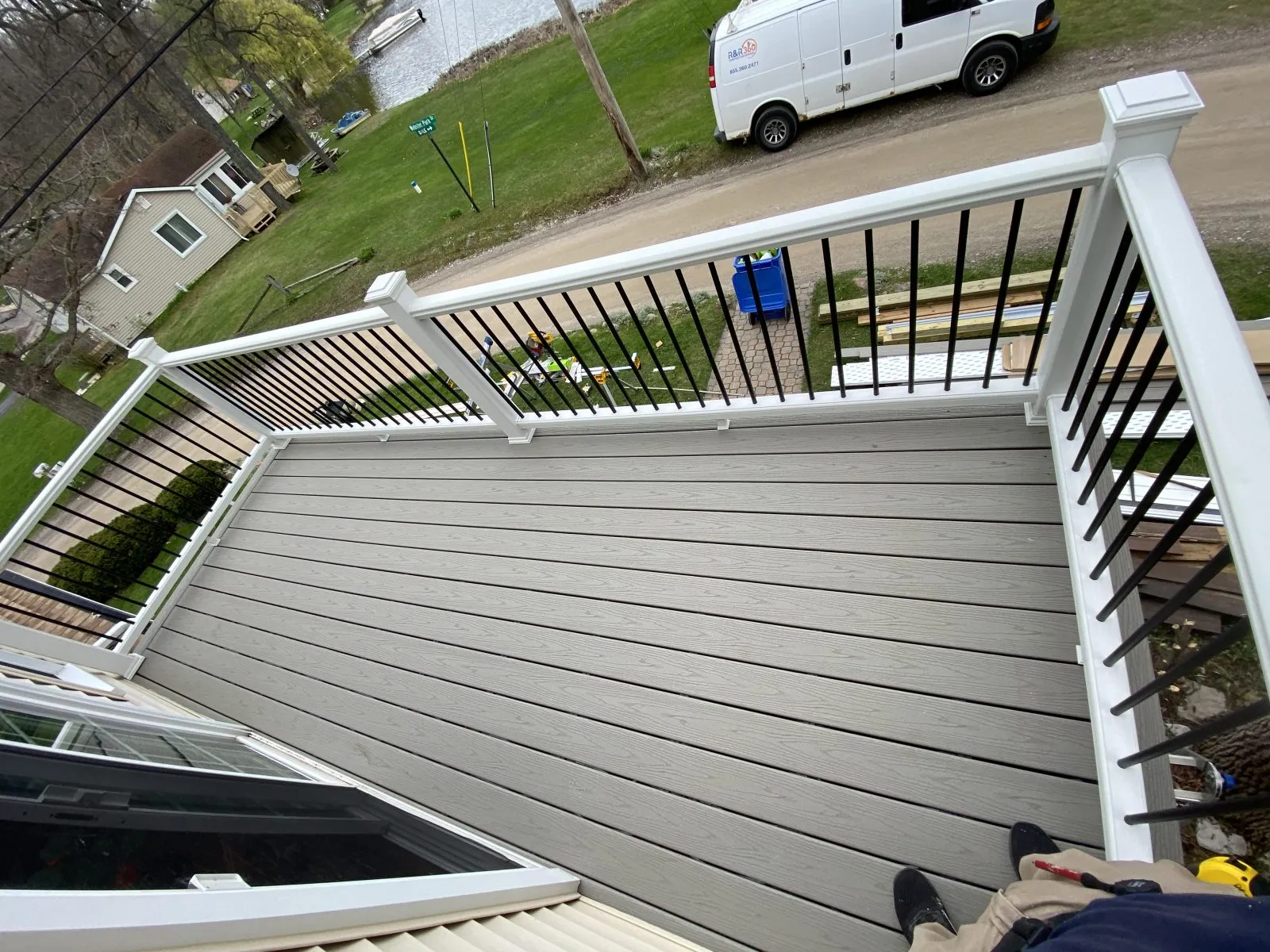All homeowners want to create a backyard escape that’s both stylish and easy. A decent deck is beyond an outside platform; however, it is a space where conversations stream, dinners are enjoyed, and calm minutes are cherished. How your deck is arranged affects the whole experience.
That’s where sound planning comes into play. A good layout brings order and elegance to your project, while also simplifying installation. Now, we go through the vital information to consider when installing composite deck boards!
Key Elements Of Deck Layout Design
An essential component of planning your deck is the style of the boards you choose, yet it may be equally as important as how you organize your boards in a way that is beneficial for your area. In this post, we will step through some layout design decisions to help you create a deck that is both expressive and practical.
Horizontal Deck Board Layout
While horizontal layouts are the most conventional and standard option, boards are parallel to the house to achieve a clean and consistent look. It gives a somewhat ageless feel and produces a tidy and sanitary flow on deck.
Horizontal designs appeal to homeowners who desire an easier installation and less material waste. Not the most difficult of designs, but it adds a feeling of depth and goes well with several types of railing. Installing composite deck boards in a way that is often most suitable for a traditional look.
Diagonal Deck Board Layout
In diagonals, boards are positioned at 45 degrees relative to their framework. That simple design choice adds immediate motion and elegance to your deck area. It creates an illusion of more space, leading the gaze outside and giving the impression of more space than the deck actually has.
It takes more effort, however, but the reward is an elegant and dynamic finish with angled cutting boards. Remodeled with composite deck boards installed diagonally, the completed deck often becomes the show-stopping centerpiece of the backyard.
Picture Frame Border Design
The picture frame designs provide a border-type effect along the edges of the deck. Boards are then installed to delineate the main surface, as if framing a piece of art. It makes for a nice, refined appearance, and it also hides the cut ends of your boards.
This layout is popular with many homeowners because it makes a basic deck more stylish. The picture frame pattern creates an extra durable way for installing composite deck boards, as well as a more finished look that adds a custom feel to the space.
Herringbone Deck Board Layout
Herringbone designs feature alternating boards at opposite angles to create a V-shaped zigzag pattern. That style is punchy and adds a unique texture that captures the eye immediately. That is a bold design decision if you want your deck to stand out.
It feels upscale and unique, but of course, it requires a lot of skill and planning; it’s definitely worth the effort. Simple outdoor spaces can be transformed into stunning areas by installing composite deck boards in a herringbone pattern.
Multi-Directional Deck Layout
In multi-directional layouts, these elements are mixed in the same deck design. Part may be horizontal, while another may use a diagonal or picture frame look. This feature enables you to promote certain zones, like seating or dining spaces.
The variation adds interest but also assists in planning large surfaces when a subtle break is required. Using different orientations of composite deck boards creates a contrast, but the overall look brings it all back together.
Conclusion
Deck layout design is a crucial aspect of the loveliness and functionality of your outdoor surroundings. Whether traditional horizontal, herringbone, or picture frame, each has its special character. Proper planning before installing composite deck boards ensures your project provides both a beautiful and durable deck.
Related Reads
- Crawfish Restaurant Calgary: Discover Jane Bond BBQ’s Seafood Delights
- Business Bay Dubai – Luxury Living & Smart Investment
- Common Causes That Lead to Engine Repair
- ISO 50001 Internal Auditor Training: Your Secret Weapon for Energy Management Success
- Order FFPE Blocks in USA: A Complete Guide for Researchers and Biobanks



